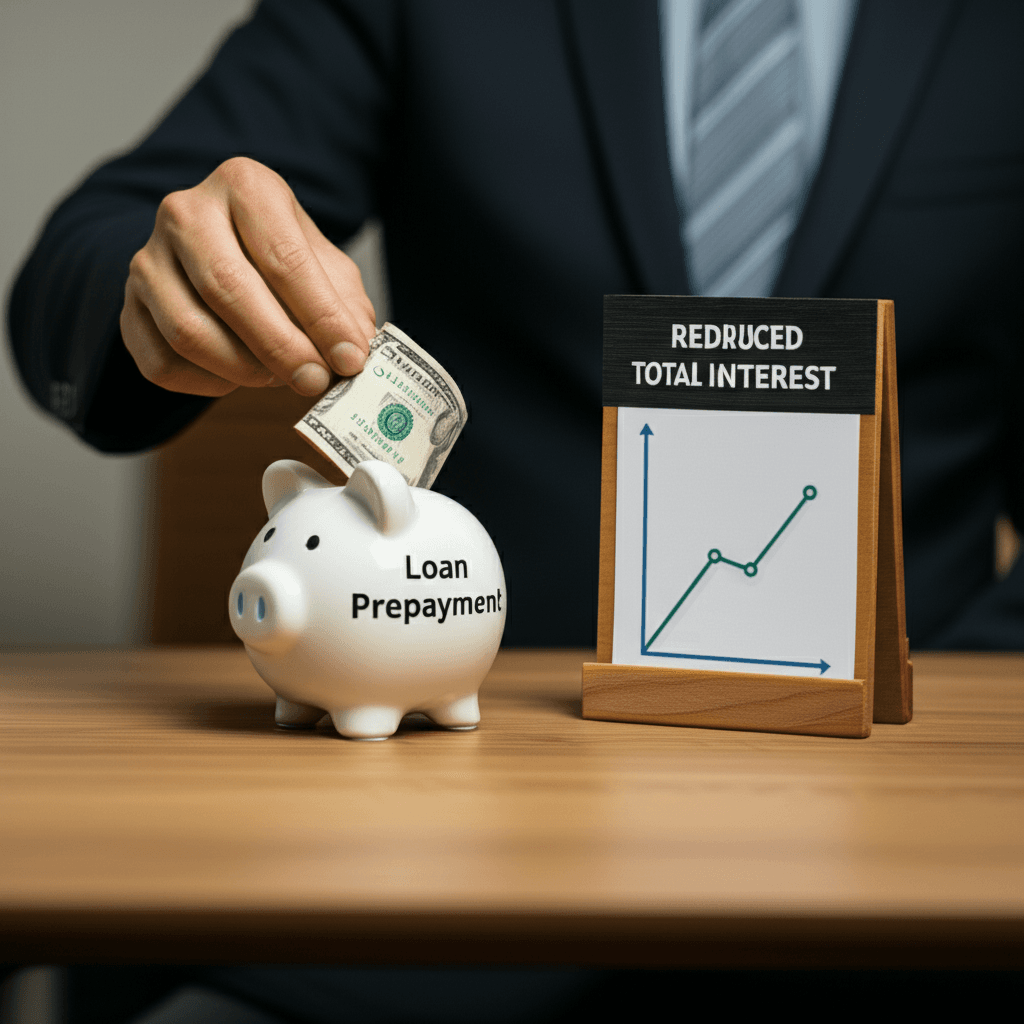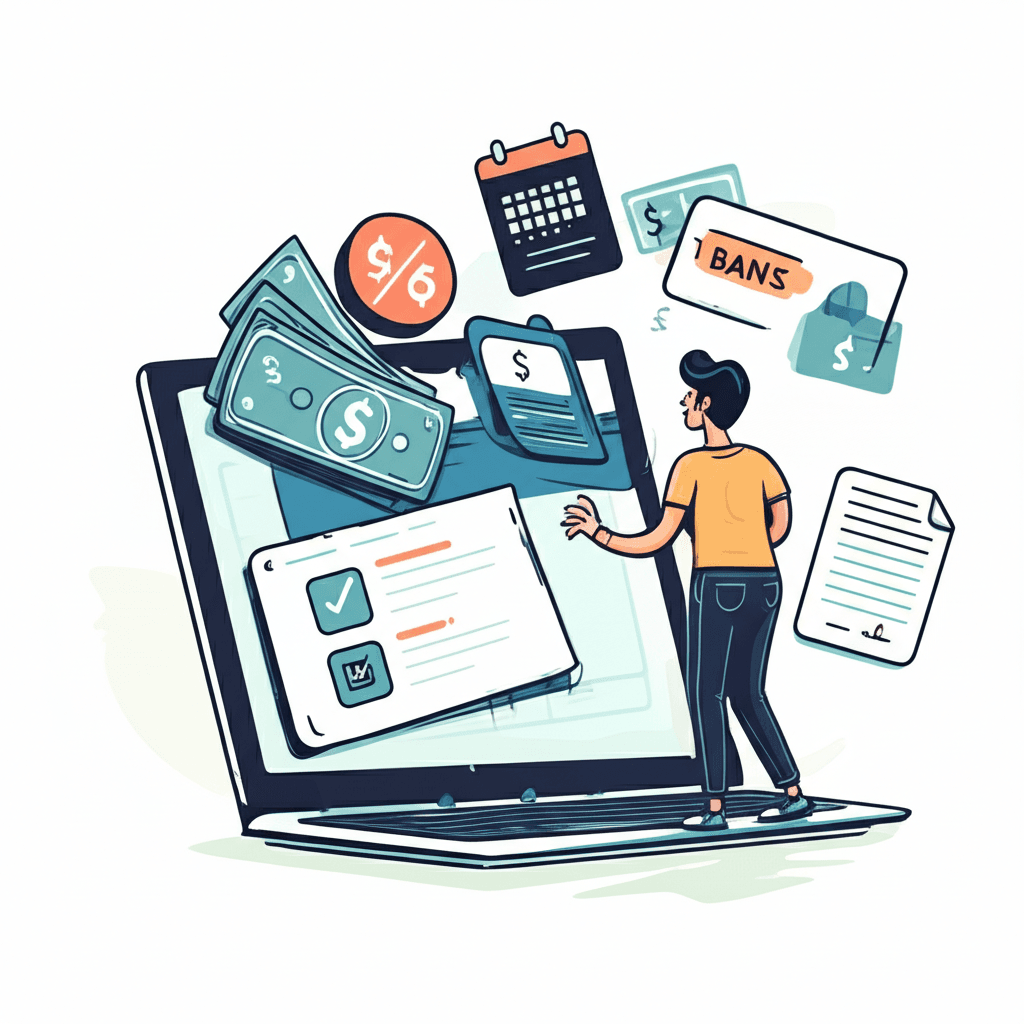How Loan Terms Affect the Cost of Credit
Nowadays, taking a loan is easier than ever. Many people look only at the EMI when considering a loan, but they overlook that the actual cost is determined by the loan terms, not just the EMI.
Loan terms include the interest rate, duration, loan amount, fees, and repayment conditions. Together, these factors define how much extra money you’ll have to pay on the loan, which is called the Cost of Credit.
In this blog, we will explain how loan terms impact the loan cost and how you can choose the best loan option for yourself.
What are Loan Terms?

Loan terms are the conditions a lender, such as a bank or NBFC, includes in your loan agreement. These terms directly affect your monthly payment and total repayment.
Main Loan Terms
– Loan amount – How much money you are borrowing
– Interest Rate (APR) – The periodic interest you will pay on the loan amount
– Loan term – The duration (in months or years) for which the loan is taken
– EMI (Equated Monthly Installment) – The monthly payment you have to make
– Processing fees and penalties – Fee charges that can be upfront or added
These terms determine the cost of the loan.
Effect of Loan Term on Cost of Credit
Loan term refers to how long the loan lasts. This affects both your EMI and total interest paid. If you choose a short term, the EMI is high, but the total interest is low. A long term means lower EMIs but much higher interest over time.
Example:
– Loan amount: ₹
– Interest Rate: 10%
– For 3 years: EMI ₹ 16,134, Total Interest ₹ 80,824
– For 7 years: EMI ₹ 8,304, Total Interest: ₹
Thus, for a longer term, you’ll pay ₹ 67,731 more in interest.
Key Point: Choosing a shorter term makes the loan cheaper, provided you can manage a higher EMI.
Effect of Interest Rate on Loan Cost
The interest rate, or APR, directly affects your overall loan cost. A higher interest rate means each EMI includes a larger interest portion.
Example:
– Loan: ₹
– Term: 5 years
– 10% interest rate: Total Interest ₹
– 12% interest rate: Total Interest ₹
A 2% increase in the rate changes the interest by ₹ 59,820.
Key Point: To get a lower interest rate, maintain a credit score of at least 750 and compare offers from multiple lenders.
EMI Options and Repayment Flexibility

Some lenders offer flexible repayment options:
– Step-up EMI: lower EMI at the start, gradually increasing later
– Step-down EMI: higher EMI at the start, gradually decreasing later
– Bullet prepayment: large amount paid at once after some time
These options can help if your income varies, but they affect the overall cost. Always calculate the total interest before choosing flexible plans.
Role of Credit Score in Loan Terms
Your credit score, or CIBIL score, determines whether you get a loan and what interest rate you’ll receive.
Benefits of having a high credit score (750+):
– Lower interest rate
– Higher loan amount eligibility
– Faster approval
– Fewer requirements
If you have a low score:
– Higher interest rate
– Risk of loan rejection
– Need for a co-signer
Tip: Keep track of your credit score using apps like OneScore or CIBIL. Make timely bill payments and EMI disbursements.
Repayment & Foreclosure Impact on Cost
If you repay the loan before its term (whether through refinance or foreclosure), you can save a significant amount in interest.
Example: Paying ₹ on a ₹ loan in 2 years could save you 15% to 25% interest.
However, some banks charge foreclosure fees (1% to 3%), so be aware of these terms beforehand.
Key Point: If repayment is fee-free, consider paying a bit extra each time to reduce the overall loan cost.
Why is it Important to Compare Lenders?

Different banks and NBFCs offer various loan terms. Always compare:
– Interest rates
– Processing fees
– Repayment clauses
– Eligibility requirements
On loan aggregator platforms like Paisabazaar or BankBazaar, you can view offers from 10 to 15 lenders at once.
Share via:


